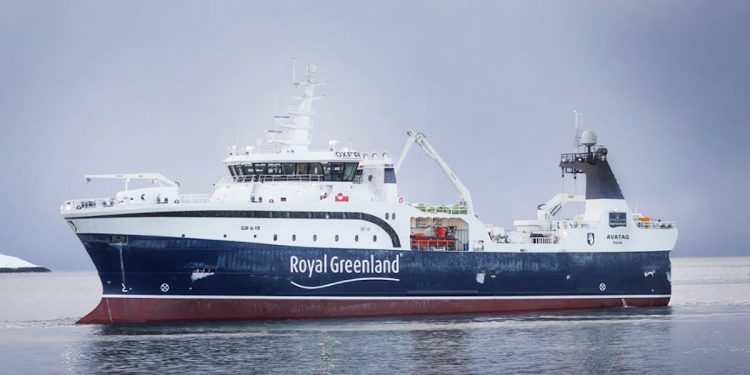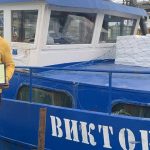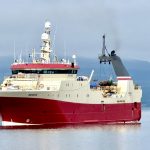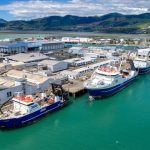With 903 tonnes discharged in Sisimiut, the landing by shrimp trawler Avataq is the largest on record in Greenland.
‘It isn’t a surprise that we fished more than the usual 400-500 tonnes for a trip and this has come true. This is a record catch,’ said Avataq’s skipper Jógvan Tróndarson as the catch was craned ashore in Sisimit.
Royal Greenland’s largest trawler, Avataq was delivered at the end of last year by Astilleros de Murueta in Spain. It is rigged for fishing shrimp and Greenland halibut.
Jógvan Tróndarson commented that the 903 tonnes was caught during a three-week trip. 18% of the catch is too be cooked and peeled by Royal Greenland’s shore production in Sisimiut, while the remainder of the catch has been cooked and frozen at sea.

He and other skippers have compared notes, and agree that Avataq’s trip sets a record.
‘Qajaq Trawl’s Markus had an 870 tonne landing last week and that was a record,’ Jógvan Tróndarson said.
‘The fishing companies aren’t in competition, but I am very proud of my crew. They have worked hard this trip. This makes it possible for us to contribute to the value chain in society and this generates more jobs and exports,’ he said.
There has been a trend for Greenlandic trawlers to become larger, and Royal Greenland’s older vessels have bene replaced with new capacity as Sisimiut was delivered last year, followed Avataq arriving in Greenland in January, and Royal Greenland’s subsidiary Ice Trawl will take delivery of shrimp trawler Nataarnaq later this year.
‘We need to get used to large quantities of fish and shrimp. It’s a matter of time before we hit another record. Maybe we’ll have 1000 tonnes next time,’ he said, commenting that larger vessels does not mean a greater pressure on resources – quite the opposite.
‘The new trawlers save time and energy. We spend longer at sea while previously we had steam home to unload. The older trawlers had to steam to Nuuk or Sisimiut to unload a full cargo. Now we are out for a longer time and save that unloading trip, so there are less emissions and use of fuel, and we are therefore more environmentally friendly,’ he said.
‘When we started thinking about these new trawlers, the aim was to be able to do much more in every way. We also put a great deal of focus on safety and working conditions. There is more space and equipment to make Avataq a better place to work. The crew gets longer time off between trips, and have better working conditions on board, which means less physical strain. I see the crew are happy and satisfied, and even more so with the prospect of a big payday.’









